The Toyota MR2 stands as a testament to innovative automotive engineering and a bold step for Toyota into the realm of affordable, mid-engine sports cars. While European manufacturers had flirted with the mid-engine layout in smaller sports cars since the 1960s, it was Toyota that truly democratized this exotic formula, creating a mass-produced, accessible sports car that captured the hearts of enthusiasts worldwide. The MR2’s impact is undeniable; it remains as sought after today as it was upon its initial release in 1983, a symbol of Toyota’s commitment to driving pleasure and forward-thinking design.
The genesis of the Toyota MR2 can be traced back to 1976 when Toyota embarked on its ambitious ‘middie’ project. However, the global oil crisis of the era cast a shadow over these plans, leading to a temporary halt in development. It wasn’t until 1980 that the project was reignited, fueled by a renewed vision: to create an affordable sports car reminiscent of the classic Toyota Sports 800 from the 1960s. This resurgence was also driven by the burgeoning North American market, hungry for exciting new models. The internal enthusiasm at Toyota was palpable, with engineers reportedly dedicating their personal time, including summer holidays, to propel this exciting project forward.
The Dawn of Reality: Toyota MR2 Emerges
A pivotal moment in the Toyota MR2 timeline arrived at the 1983 Tokyo Motor Show. Here, Toyota unveiled the SV-3 prototype, a mid-engine marvel that immediately captured public attention. Displayed prominently on a turntable, the SV-3 was a significant evolution of the earlier SA-X prototype. Its design was remarkably close to the final production version. Only minor tweaks were deemed necessary – primarily to the front and rear spoilers – to enhance aerodynamic stability, particularly in crosswind conditions, for the production model.
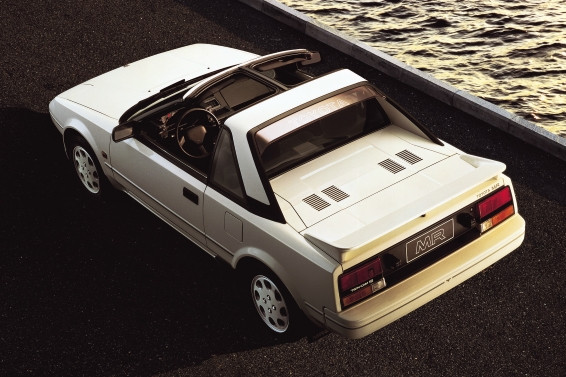 First Generation Toyota MR2
First Generation Toyota MR2
Christened the Toyota MR2 – an abbreviation for ‘Midship Runabout 2-seater’ – this groundbreaking model officially launched in Japan in June 1984. It soon joined Toyota’s sporty lineup in the UK six months later, alongside the established Celica and Supra. The MR2’s mid-engine configuration necessitated a complex structural design, incorporating five high-strength bulkheads to ensure rigidity and safety. Despite this robust construction, the car achieved a remarkably light weight of just 977kg, distributed with a 44:56 front-to-rear weight bias, contributing to its agile handling.
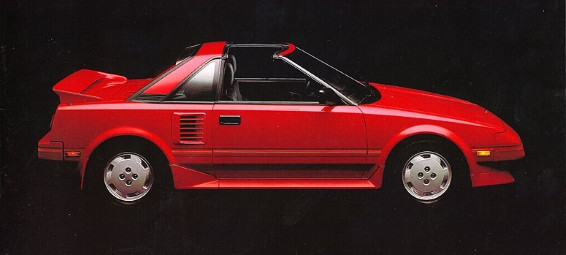 Toyota MR2 Mk1 Side Profile
Toyota MR2 Mk1 Side Profile
Initially, the Toyota MR2 was offered in three trim levels in the Japanese domestic market, with a choice of two engine options. The star of the engine lineup was undoubtedly the legendary 122bhp 1.6-liter DOHC 16v 4A-GE engine, also found in the popular Toyota Corolla GT. This engine became synonymous with the Mk1 MR2, delivering a rev-happy and engaging driving experience.
Later in its production run, Toyota expanded the MR2’s options to include a T-bar roof, offering an open-air driving experience. A performance upgrade arrived in the form of the supercharged 4A-GZE engine, boosting power to 145bhp. However, even in its naturally aspirated form, the MR2 was a capable performer. Boasting a top speed of 124mph and a 0-60mph sprint time of just 8.2 seconds, the standard MR2 outpaced the majority of its competitors in terms of outright speed and agility.
The Toyota MR2’s groundbreaking design and exhilarating performance did not go unnoticed. It was honored as Japan’s ‘Car of the Year 1984-85’, surpassing strong contenders like the Honda CR-X and Nissan Laurel. This prestigious award validated the overwhelmingly positive reviews from contemporary road tests, which consistently lauded the MR2’s nimble handling, playful character, and sheer driving fun.
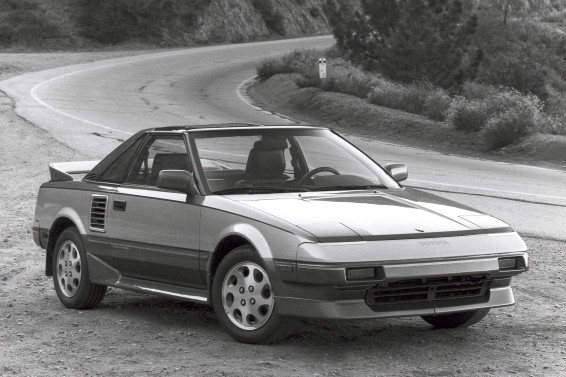 Toyota MR2 Mk1 Front View
Toyota MR2 Mk1 Front View
The MR2’s inherent handling prowess translated seamlessly to the motorsport arena. One-make racing series dedicated to the MR2 gained popularity in both the UK and the US, showcasing the car’s competitive spirit. Toyota Team Europe (TTE) even developed a wide-bodied MR2, codenamed ‘222D’, with aspirations to compete in the proposed Group S category of the World Rally Championship against formidable rivals like the Peugeot 205 T16 and Audi Quattro. Regrettably, this ambitious TTE project was shelved when the Group S category was ultimately cancelled.
A Mature Evolution: The Second Generation Toyota MR2
For the second generation, there was no question that the core DNA of the MR2 – its mid-engine layout and engaging driving dynamics – would be preserved. However, Toyota aimed to elevate the MR2 to a more sophisticated level. The brief for the new model encompassed a more refined and stylish design, enhanced ergonomics, a higher-quality interior, and the introduction of larger, more potent engines.
Kazutoshi Arima, who had served as second-in-command on the original MR2 project and now Chief Engineer, envisioned the second-generation MR2 as a step upmarket, targeting a broader appeal while retaining its sporting essence.
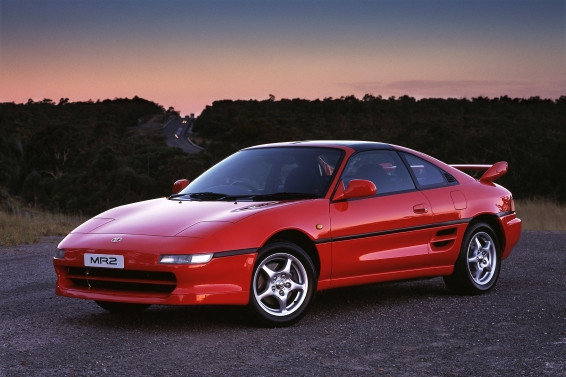 Second Generation Toyota MR2 Front Quarter View
Second Generation Toyota MR2 Front Quarter View
Toyota’s internal design studios and teams were invited to submit proposals for the new MR2’s styling. The chosen design was then refined by Chief Designer Kunihiro Uchida, who also played a key role in the design of the Lexus LS400. The resulting aesthetic bore a striking resemblance to scaled-down Italian exotica, hinting at a more premium positioning.
 Toyota MR2 Mk2 Side Profile
Toyota MR2 Mk2 Side Profile
The sleek and redesigned MR2 debuted in Japan in October 1989, marking almost five and a half years since the launch of the first-generation model. During its development phase, two prototypes underwent extensive testing and suspension tuning in the UK, the MR2’s second-largest export market, ensuring it would meet the demands of European roads and drivers. The second generation MR2 had grown in size, gaining 245mm in length, 30mm in width, and an 80mm longer wheelbase. Despite these increased dimensions, it maintained a svelte silhouette with a 10mm reduction in overall height. The coupe and T-bar body styles from the previous generation were carried over.
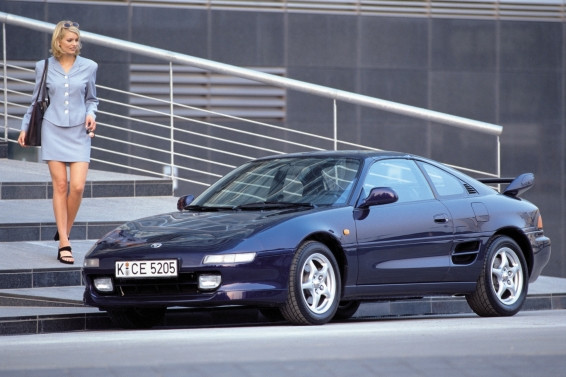 Toyota MR2 Mk2 with Owner
Toyota MR2 Mk2 with Owner
The engine lineup for the second-generation Toyota MR2 at launch featured three 2.0-liter 16v engines. These included a base 119bhp unit sourced from the Carina (exclusively for the UK market), the naturally aspirated 3S-GE producing 165bhp, and the turbocharged 3S-GTE, delivering a potent 225bhp and also utilized in the Celica GT-Four.
For the American market, a larger 2.2-liter 5S-FE engine replaced the mid-range 3S-GE, prioritizing torque for US driving conditions. The increased torque output of these engines effectively compensated for the second-generation MR2’s slightly increased kerb weight, which ranged from 1160 to 1285kg depending on the specific model. Despite the growth and added refinement, Autocar & Motor magazine noted that the new UK GT model had not ‘forsaken the original’s intimacy and finesse’, praising it as ‘an altogether bolder assault on the senses’.
 Toyota MR2 Mk2 Rear Driving View
Toyota MR2 Mk2 Rear Driving View
The second-generation MR2 enjoyed an exceptionally long ten-year production run, receiving only minor refinements throughout its lifespan. Enthusiasts often distinguish between different versions based on their production period, referring to them as Revision 2 through Revision 5, reflecting the subtle updates and improvements made over time.
Toyota Racing Development (TRD), Toyota’s motorsport and tuning arm, developed and marketed two distinctive versions of the car specifically for the Japanese domestic market. In 1996, the TRD Technocraft MR Spider, a soft-top convertible variant, was introduced, quickly followed in 1997 by the wide-bodied TRD 2000GT model. This limited edition also featured a mild ‘phase one’ tuning upgrade for the 3S-GTE engine, boosting output to 245bhp, and its styling was clearly inspired by the successful MR2 race cars competing in the Japanese GT Championship.
Returning to the Original Formula: The Third Generation Toyota MR2
While sales of the second-generation Toyota MR2 continued into the new millennium in Europe, production of its highly anticipated successor commenced in October 1999. Hints of a shift in focus had emerged as early as 1995 with the MRJ concept car showcased at the Tokyo Motor Show that year. Many industry observers believed the MRJ to be the third-generation MR2 in disguise, even predicting its launch date and price point. However, Toyota surprised everyone with the unveiling of the MR-S (Midship Runabout-Sports) concept at the 1997 Tokyo show.
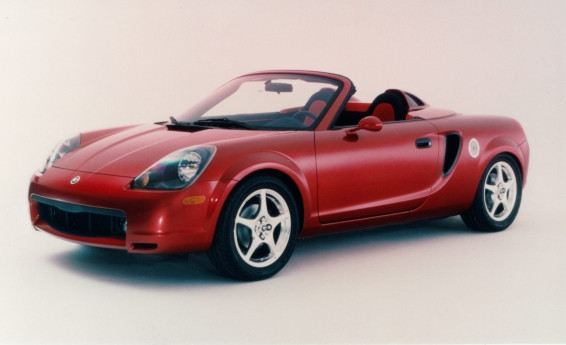 Toyota MR-S Concept Front View
Toyota MR-S Concept Front View
Technically considered an indirect successor to the second-generation MR2, which had evolved into more of a grand tourer, the MR-S concept was a roadster that Chief Engineer Tadashi Nakagawa stated would break “the cycle of growth”. This referred to the trend of successive vehicle generations becoming progressively larger. The new car would be smaller in every dimension – overall size, engine capacity, power output, kerb weight, and price. It was also designed to be simpler to manufacture, with a more standardized specification across all markets.
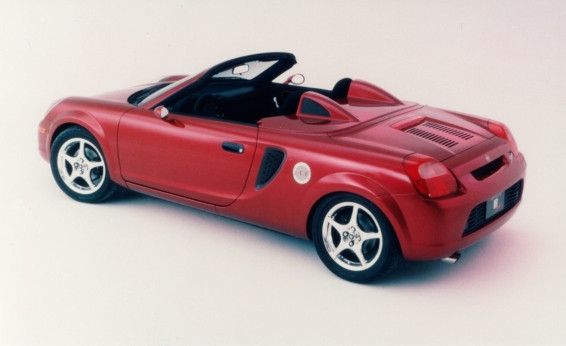 Toyota MR-S Concept Rear View
Toyota MR-S Concept Rear View
Anticipation was high that the next MR2 would be a genuinely exciting, pure sports car tailored for a new generation and a new century. The focus was firmly back on the original ethos of the Mk1 MR2 – lightweight, nimble, and affordable fun.
Promise Delivered: The Third Generation Toyota MR2 Arrives
The third-generation model was launched in Japan just days before the 1999 Tokyo Motor Show, coinciding with Toyota’s milestone achievement of reaching 100 million units of cumulative passenger car production. In Japan, it retained the MR-S name from the concept car, reflecting its new open-top configuration. However, in export markets such as Europe and the United States, it was marketed as the MR2 Roadster and MR2 Spyder respectively.
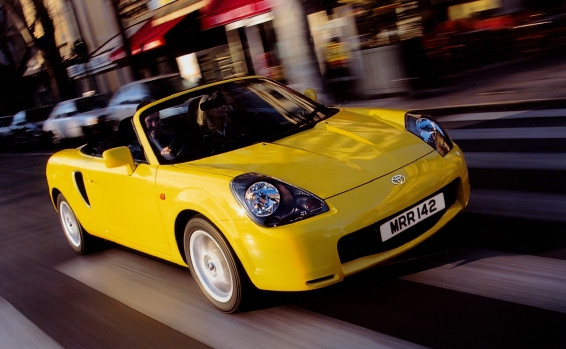 Third Generation Toyota MR2 Driving Front View
Third Generation Toyota MR2 Driving Front View
Remarkably, the new model weighed even less than the original first-generation MR2, starting from just 960kg, while still offering a substantial level of standard equipment. This weight reduction was partly achieved by eliminating the rear boot and therefore the fifth bulkhead. To compensate for the lack of a traditional boot, luggage capacity was enhanced by incorporating a full-width, 78-liter storage compartment behind the seats.
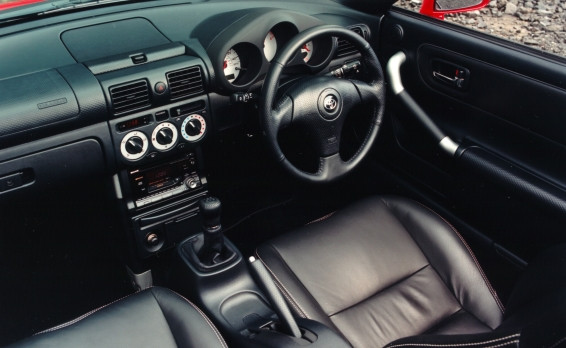 Third Generation Toyota MR2 Interior
Third Generation Toyota MR2 Interior
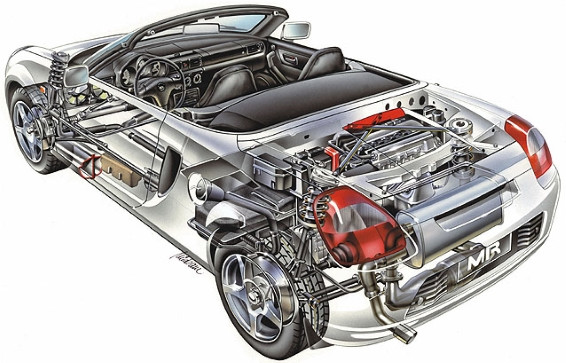 Third Generation Toyota MR2 Cutaway View
Third Generation Toyota MR2 Cutaway View
In line with Toyota’s strategy to streamline production for global markets, a single engine option was offered worldwide: the all-alloy 1.8-liter DOHC 16v VVT-i 1ZZ-FE unit, also found in the seventh-generation Celica. Producing 138bhp, the new MR2 offered respectable performance and boasted the highest power-to-weight ratio in its class. The motoring press particularly praised its dart-like responsiveness through the controls and its exceptional handling dynamics, echoing the accolades of the original Mk1.
Like its predecessor, the third-generation MR-S attracted considerable attention from Toyota-affiliated tuners and the Japanese aftermarket. Limited-run special editions such as the Modellista Caserta, VM180 TRD, VM180 Zagato, and TOM’S W123 were produced, further enhancing the MR2’s appeal to enthusiasts.
A significant official update arrived in 2001 when an optional five-speed (later six-speed) SMT ‘Sequential Manual Transmission’ was introduced alongside the standard manual gearbox. This marked a pioneering moment as the first time a sequential gearbox was fitted to any Japanese production car. The SMT system featured an automatically engaging clutch, allowing drivers to change gears without lifting off the accelerator, offering a blend of manual control and automated convenience.
The End of the Line for the Toyota MR2
A global downturn in the sports car market during the new millennium significantly impacted sales of the Toyota MR2. Initial annual sales figures, once in the tens of thousands, gradually dwindled to thousands and eventually hundreds. Sales of the MR2 (and Celica) ceased in the US and Australia at the end of the 2005 model year. However, production continued in Japan, Mexico, and Europe until 2007, when production finally concluded, marking the end of the Toyota MR2 era.
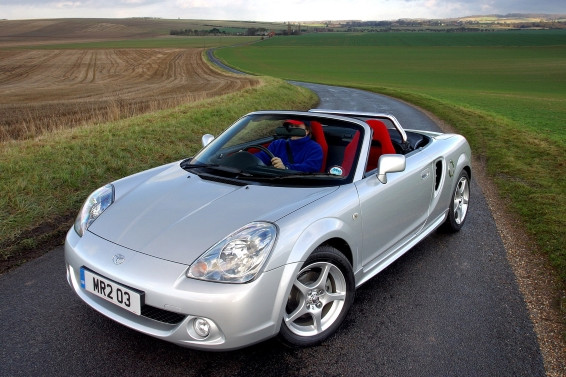 Third Generation Toyota MR2 Runout Model Front View
Third Generation Toyota MR2 Runout Model Front View
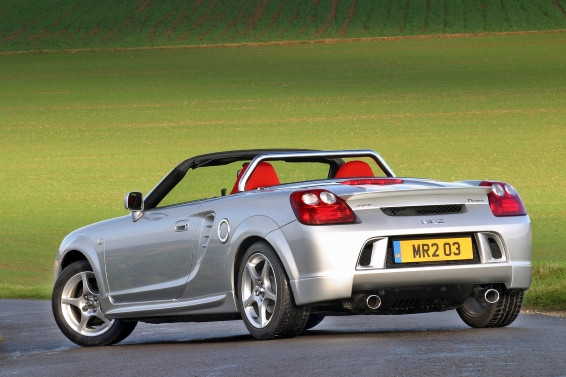 Third Generation Toyota MR2 Runout Model Rear View
Third Generation Toyota MR2 Runout Model Rear View
Despite its production cessation, the Toyota MR2 legacy endures. It remains a beloved and iconic sports car, celebrated for its pioneering mid-engine layout, engaging driving experience, and accessible price point. The MR2 cemented Toyota’s position as a manufacturer capable of producing not only reliable and practical vehicles, but also genuinely exciting and innovative sports cars that continue to captivate enthusiasts worldwide.